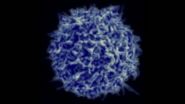Reprogramming 'support cells' into neurons could repair injured adult brains
2014-11-20
(Press-News.org) The portion of the adult brain responsible for complex thought, known as the cerebral cortex, lacks the ability to replace neurons that die as a result of Alzheimer's disease, stroke, and other devastating diseases. A study in the International Society for Stem Cell Research's journal Stem Cell Reports, published by Cell Press on November 20 shows that a Sox2 protein, alone or in combination with another protein, Ascl1, can cause nonneuronal cells, called NG2 glia, to turn into neurons in the injured cerebral cortex of adult mice. The findings reveal that NG2 glia represent a promising target for neuronal cell replacement strategies to treat traumatic brain injury.
"Our study is the first to demonstrates unambiguously the conversion of a specific subtype of glia, the so-called NG2 glia, into induced neurons in living animals," says senior study author Benedikt Berninger of Johannes Gutenberg University Mainz. "The findings pave the way for future studies aimed at harnessing the potential of these cells for brain repair."
The cerebral cortex plays a key role in memory, attention, perception, language, and consciousness. Unlike other regions in the adult brain, the cerebral cortex is not capable of generating new neurons after traumatic injury. Berninger and others have previously shown that Sox2, Ascl1, and other transcription factors--proteins that bind to specific DNA sequences to control the activity of genes--can induce the nonneuronal "support cells" known as glia to turn into neurons. It has been difficult, however, to convert glia into neurons after brain injuries such as stroke in the adult cerebral cortex of living animals.
To test potential brain repair strategies, Berninger and Magdalena Götz of Ludwig-Maximilians University Munich delivered transcription factors into the cerebral cortex of adult mice three days after traumatic injury. Surprisingly, they found that Sox2 alone or in combination with Ascl1 was sufficient to trigger the emergence of neurons, contrary to the widely accepted view that Sox2 prevents stem cells from turning into more mature cells such as neurons. Notably, the majority of cells that converted into neurons were NG2 glia. These glial cells have received relatively little attention in the past, even though they represent a promising cellular source for brain repair strategies because of their abundance and life-long capacity for proliferation.
Taken together, these findings support the notion that cellular reprogramming may become a way of replacing degenerated neurons in the adult brain. "Our study sets the stage for further research to identify which additional cues could induce these neurons to fully mature and incorporate into functional circuits, thereby allowing this approach to potentially be used in the clinic," Berninger says.
INFORMATION:
Stem Cell Reports, Heinrich et al.: "Sox2-mediated conversion of NG2 glia into induced neurons in the injured adult cerebral cortex"
ELSE PRESS RELEASES FROM THIS DATE:
2014-11-20
As we age, we have an increasingly harder time ignoring distractions. But new research online November 20 in the Cell Press journal Neuron reveals that by learning to make discriminations of a sound amidst progressively more disruptive distractions, we can diminish our distractibility. A similar strategy might also help children with attention deficits or individuals with other mental challenges.
Distractibility, or the inability to sustain focus on a goal due to attention to irrelevant stimuli, can have a negative effect on basic daily activities, and it is a hallmark ...
2014-11-20
CINCINNATI - Researchers have successfully targeted an important molecular pathway that fuels a variety of cancers and related developmental syndromes called "Rasopathies."
Reporting their results Nov. 20 in Chemistry & Biology, scientists at Cincinnati Children's Hospital Medical Center say they identified a class of lead compounds that successfully recognize a key target in the Ras signaling pathway - opening the door to future development of therapies that could make treatments more effective with fewer side effects.
Although still in the early stages of the development ...
2014-11-20
While investigating a rare genetic disorder, researchers at the University of California, San Diego School of Medicine have discovered that a ubiquitous signaling molecule is crucial to cellular reprogramming, a finding with significant implications for stem cell-based regenerative medicine, wound repair therapies and potential cancer treatments.
The findings are published in the Nov. 20 online issue of Cell Reports.
Karl Willert, PhD, assistant professor in the Department of Cellular and Molecular Medicine, and colleagues were attempting to use induced pluripotent ...
2014-11-20
VIDEO:
Researchers at the Salk Institute explain how a new technology, called ReBiL, can spot protein interactions more accurately, providing a new tool for cancer and other drug diagnostics.
Click here for more information.
LA JOLLA--For decades, researchers have struggled to translate basic scientific discoveries about cancer into therapeutics that effectively--and with minimal side effects--shrink a tumor.
One avenue that may hold great potential is the development of ...
2014-11-20
Researchers at the RIKEN Brain Science Institute in Japan have identified a key neuronal pathway that makes learning to avoid unpleasant situations possible. Published online in the November 20 issue of Neuron, the work shows that avoidance learning requires neural activity in the habenula representing changes in future expectations.
Learning to avoid threats is an essential survival skill for both humans and animals. To do so, animals must be able to predict a danger and then update their predictions based on their actions and new outcomes. Until now, the neural mechanisms ...
2014-11-20
Scientists have created the largest-scale map to date of direct interactions between proteins encoded by the human genome and newly predicted dozens of genes to be involved in cancer.
The new "human interactome" map describes about 14,000 direct interactions between proteins. The interactome is the network formed by proteins and other cellular components that 'stick together.' The new map is over four times larger than any previous map of its kind, containing more high-quality interactions than have come from all previous studies put together.
CIFAR Senior Fellow ...
2014-11-20
PHILADELPHIA - Human existence is basically circadian. Most of us wake in the morning, sleep in the evening, and eat in between. Body temperature, metabolism, and hormone levels all fluctuate throughout the day, and it is increasingly clear that disruption of those cycles can lead to metabolic disease.
Underlying these circadian rhythms is a molecular clock built of DNA-binding proteins called transcription factors. These proteins control the oscillation of circadian genes, serving as the wheels and springs of the clock itself. Yet not all circadian cycles peak at the ...
2014-11-20
Harvard Stem Cell Institute scientists at Brigham and Women's Hospital have found the cellular origin of the tissue scarring caused by organ damage associated with diabetes, lung disease, high blood pressure, kidney disease, and other conditions. The buildup of scar tissue is known as fibrosis.
Fibrosis has a number of consequences, including inflammation, and reduced blood and oxygen delivery to the organ. In the long term, the scar tissue can lead to organ failure and eventually death. It is estimated that fibrosis contributes to 45 percent of all deaths in the developed ...
2014-11-20
Liver cancer is one of the most frequent cancers in the world, and with the worst prognosis; according to the World Health Organisation (WHO), in 2012, 745,000 deaths were registered worldwide due to this cause, a figure only surpassed by lung cancer. The most aggressive and frequent form of liver cancer is hepato-cellular carcinoma (HCC); little is known about it and there are relatively few treatment options.
Researchers from the Spanish National Cancer Research Centre (CNIO), have produced the first mouse model that faithfully reproduces the steps of human HCC development, ...
2014-11-20
Mouse cells and tissues created through nuclear transfer can be rejected by the body because of a previously unknown immune response to the cell's mitochondria, according to a study in mice by researchers at the Stanford University School of Medicine and colleagues in Germany, England and at MIT.
The findings reveal a likely, but surmountable, hurdle if such therapies are ever used in humans, the researchers said.
Stem cell therapies hold vast potential for repairing organs and treating disease. The greatest hope rests on the potential of pluripotent stem cells, which ...
LAST 30 PRESS RELEASES:
[Press-News.org] Reprogramming 'support cells' into neurons could repair injured adult brains



